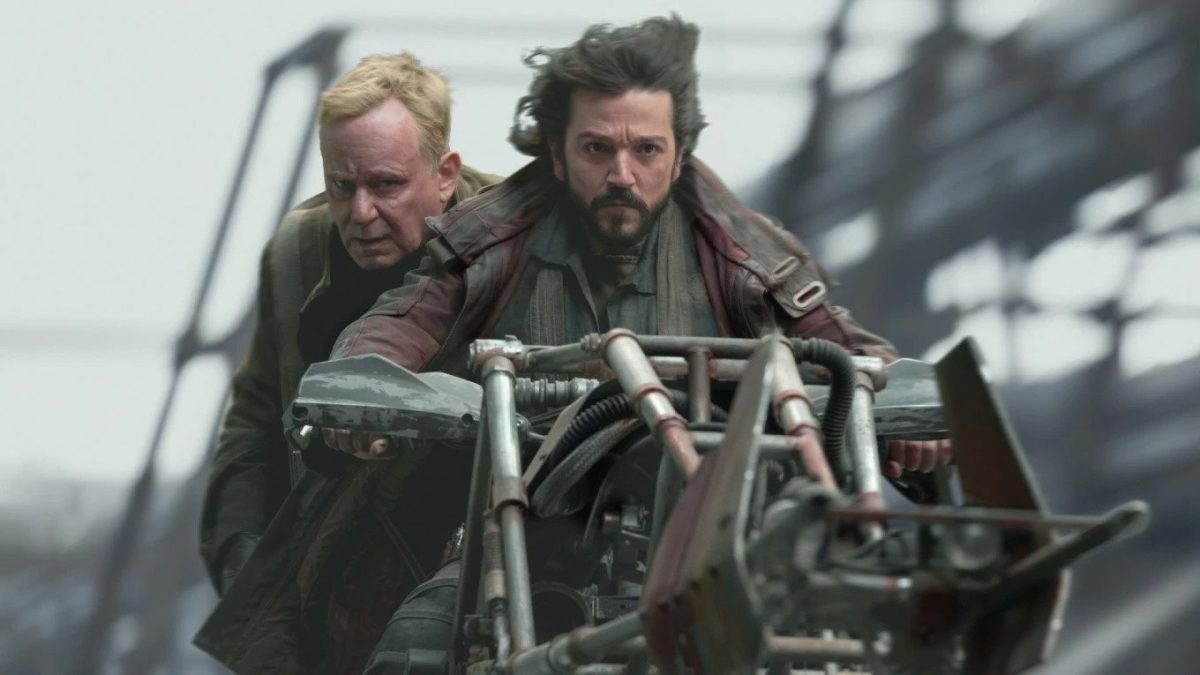Photo Courtesy of Variety
On Sept. 21, “Andor,” a new original “Star Wars” series, premiered exclusively on Disney+.
First announced in Nov. 2017 as part of a slew of shows within the “Star Wars” mythos, the show is a prequel to “Rogue One,” a film set before the original 1977 “Star Wars.” By Nov. 2018, Diego Luna was confirmed to be reprising his role of Cassian Andor from the movie, as the series was to focus on his character’s origins.
The series is set five years before the events of “Rogue One” and opens with Andor, a refugee whose home planet was destroyed by the Empire many years ago, on a search for his long-lost sister.
In its three-episode premiere, the show diverted expectations. While many expected an action-packed, non-stop thrill ride similar to its film counterpart, the story is slower-paced and about everyday working people. The show gives viewers a look into a side of “Star Wars” that hasn’t been explored much before.
The leads aren’t intelligent Jedi nor are they evil military officials on a quest for ultimate power. Instead, the show discusses civilians just going day by day and suffering through bad times, while including undertones of sociopolitical themes that are reminiscent of issues in our world today.
This series captures the human side of “Star Wars” at its best, and the franchise is given a fresh take with this presentation. In this sense, it’s perhaps the most realistic take.
The series is not without flaws, however. This character-driven take is, without a doubt, melodramatic. At times, it is an excruciatingly slow-paced series that doesn’t know where to go with itself, especially after the first three episodes that kick off the story. It was wise of Disney+ to premiere the release of the first three episodes together, as they form a complete hour and a half story. If this was not the case and audiences were only given the first episode, there may have been more negative reception, as the first episode alone surprisingly does not tell a full story at all.
Disney+ should have continued releasing three episodes at once for the entire season overall.
Another fatal flaw, similar to its sequel “Rogue One,” is underdeveloped and non-interesting characters. The exception might be Andor, as viewers learn of his origin with various flashbacks in the first three episodes. By the fourth and fifth episodes, however, he is given nothing to do and feels like a side character with actions and events completely out of his control.
Beyond these flashbacks, viewers are given nothing new that they don’t already know about him from “Rogue One.” He’s a gunslinger, a rebel and a man fighting for good – nothing else but that. Characters do not have to be completely formed by the end of a show’s first episodes, but viewers should at least have a rough idea of who they are and what will make them change.
The lead of “Andor” feels exactly like the same man he will grow to be in “Rogue One.” The enemies are two-dimensional, cliché characters trying to rise through the ranks and are nothing more than whiners who are devoid of what made villains such as Darth Vader or Emperor Palpatine so memorable and intimidating.
None of the characters keep viewers engaged. The conversations that they have don’t advance the series further and only serve to throw in a few Easter eggs for hardcore fans.
“Andor” gives a unique perspective of the “Star Wars” world by detaching it from the rest of the franchise and making it have little to do with the overall universe of stories. However, it fails in every way to capture the attention of audiences and keep them compelled to watch due to underdeveloped characters and incomplete plotlines that are dragged out unnecessarily.








